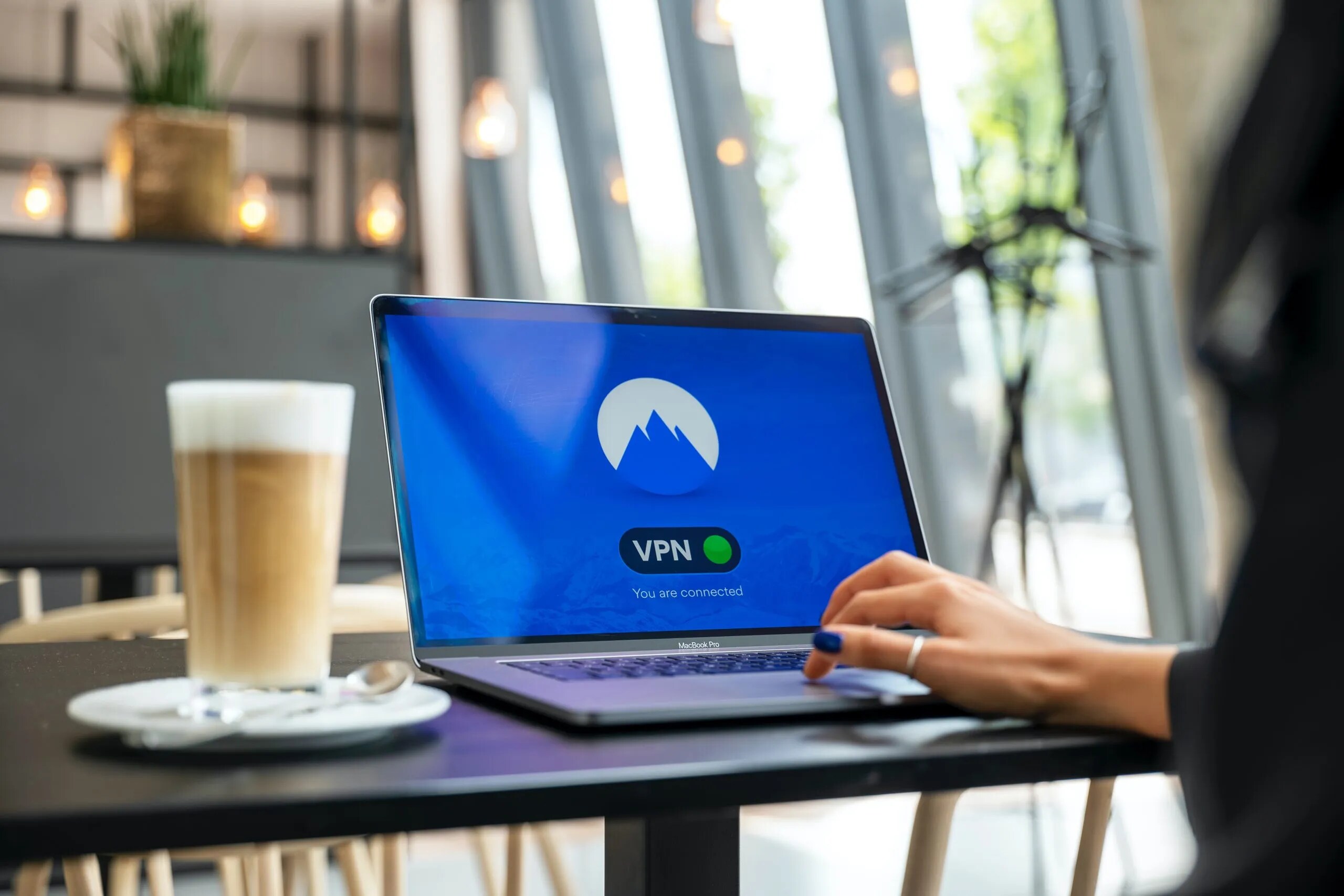Introduction
With the rise in popularity of peer-to-peer (P2P) file sharing and online streaming services, internet service providers (ISPs) have implemented measures to manage the traffic on their networks. One such measure is throttling, which refers to the intentional slowing down of internet speeds for specific applications or protocols.
Throttling can have a significant impact on P2P file sharing, resulting in slower download and upload speeds, and ultimately hampering the overall user experience. The practice of P2P throttling has been a subject of concern for users who rely on these platforms for sharing large files, accessing media content, or participating in online multiplayer gaming.
In this article, we will delve into the world of ISP throttling and explore ways to test if your ISP is throttling P2P traffic. By understanding the signs of throttling and utilizing specific tests, you can determine if your ISP is actively impeding your P2P connectivity. Additionally, we will discuss strategies to bypass throttling using virtual private networks (VPNs) and how to confront your ISP if throttling is detected.
Whether you are an avid downloader, an online gamer, or simply value a high-speed internet connection, understanding ISP throttling and being able to identify if it is affecting your P2P activities is essential. So, let’s dive in and equip ourselves with the tools to test if your ISP is throttling P2P traffic.
Understanding ISP Throttling
Before we delve into how to test if your ISP is throttling P2P traffic, it is important to have a clear understanding of what ISP throttling is and why ISPs employ this practice.
ISP throttling, also known as bandwidth throttling or traffic shaping, is a technique used by ISPs to regulate the flow of internet traffic on their network. It involves intentionally slowing down specific types of internet traffic, such as P2P file sharing, streaming services, or gaming, to prevent network congestion and ensure fair usage among their subscribers.
Throttling can be applied to different protocols, including BitTorrent, eDonkey, or Gnutella, which are commonly used for P2P file sharing. ISPs typically prioritize web browsing and other applications that require low latency, while slowing down P2P traffic due to its high bandwidth usage and potential infringements of copyright laws.
ISPs justify throttling by claiming that it helps maintain network stability and provides a better overall experience for all users. By controlling bandwidth usage during peak hours, ISPs can prevent network congestion and ensure that all users can access the internet without significant disruptions.
However, the widespread practice of ISP throttling has raised concerns among internet users. Critics argue that throttling stifles innovation, impedes free expression, and violates the principles of net neutrality, which advocate for equal treatment of all internet traffic.
Now that we have a grasp of what ISP throttling entails, let’s move on to discovering the signs that indicate your ISP may be throttling your P2P traffic.
Signs of P2P Throttling
If you suspect that your ISP is throttling your P2P traffic, there are several signs to look out for. While these signs do not definitively prove throttling, they can indicate that your ISP may be deliberately slowing down your P2P connections.
1. Slow Download Speeds: One of the most obvious signs of P2P throttling is a significant decrease in download speeds when using P2P applications. If you notice that your downloads are consistently slower than expected, even when connected to well-seeded torrents, it could be a sign that your ISP is intentionally limiting your P2P bandwidth.
2. Inconsistent Upload Speeds: Throttling can also affect your upload speeds when sharing files via P2P. If you experience a sudden drop in your upload speeds, particularly when using P2P applications, it could be an indication of throttling measures being applied by your ISP.
3. Time-Based Slowdowns: Some ISPs implement time-based throttling, where they specifically slow down P2P traffic during certain hours of the day. If you consistently experience slower speeds during specific periods, such as evenings or weekends, it may be an indicator that your ISP is purposely targeting P2P traffic during those times.
4. Different Speeds for Encrypted Traffic: ISPs may prioritize or specifically slow down traffic based on packet types. If you find that encrypted P2P traffic is significantly faster than non-encrypted traffic, it could be a sign that your ISP is targeting and throttling unencrypted P2P connections specifically.
5. Connection Resets or Timeouts: Intentional throttling can sometimes manifest as frequent connection resets or timeouts when using P2P applications. If you experience regular disconnections or difficulties maintaining a stable connection, despite having a stable internet connection for other applications, it may be indicative of throttling.
It is worth noting that these signs are not conclusive evidence of P2P throttling, as there could be other factors impacting your internet speeds. However, if you consistently observe one or more of these signs, it is advisable to perform tests to verify if your ISP is indeed throttling your P2P traffic. We will explore how to conduct these tests in the following sections.
Checking Internet Speed
Before proceeding with the tests to determine if your ISP is throttling P2P traffic, it is essential to establish a baseline of your internet speed. By knowing your normal internet speed, you can compare it to the speeds you experience when using P2P applications.
There are numerous online tools available to measure your internet speed, commonly referred to as speed tests. These tests can provide you with information about your download speed, upload speed, and latency. Here’s how you can perform a speed test:
- Choose a reputable speed test website. Popular options include Ookla’s Speedtest.net, Fast.com by Netflix, or Google’s “Internet speed test” tool.
- Ensure that you are not actively downloading or uploading any files and that no other bandwidth-intensive activities are taking place on your network.
- Close any unnecessary applications or programs running in the background to get the most accurate speed test results.
- Visit the chosen speed test website and click on the “Go” or “Start Test” button. The test will initiate and measure your download and upload speeds, as well as latency.
- Wait for the test to complete, and note down your download speed, upload speed, and latency values.
By checking your internet speed, you have a reference point to compare against when conducting tests to determine if your ISP is throttling P2P traffic. If your internet speed is significantly lower when using P2P applications compared to the results of the speed test, it could indicate the presence of throttling.
Now that you have established your baseline internet speed, let’s explore how using a VPN can help bypass throttling and how to test P2P speeds both with and without a VPN to detect any potential throttling by your ISP.
Using a VPN to Bypass Throttling
If you suspect that your ISP is throttling your P2P traffic, one effective method to bypass this restriction is by using a virtual private network (VPN). A VPN establishes a secure and encrypted connection between your device and the internet by routing your traffic through a remote server.
When you connect to a VPN server, your online presence and activities become hidden from your ISP. This means that your ISP cannot easily identify and throttle specific types of traffic, such as P2P connections.
Here’s how you can use a VPN to bypass throttling:
- Choose a reputable VPN service provider that supports P2P traffic.
- Install the VPN software or app on your device and follow the instructions to set it up.
- Connect to a VPN server located in a country where P2P file sharing is allowed and not subject to heavy internet restrictions.
- Once connected, your internet traffic will be encrypted and routed through the VPN server, making it difficult for your ISP to detect and throttle your P2P traffic.
By using a VPN, you can enjoy improved speeds and bypass ISP throttling on P2P connections. However, it is important to choose a reliable and trustworthy VPN service that does not itself throttle or restrict your internet speed.
Now that you understand the benefits of using a VPN to bypass throttling, it’s time to move on to the next step: testing P2P speeds both without and with the VPN to detect any potential throttling.
Testing P2P Speeds without VPN
Once you have set up your baseline internet speed and have a VPN ready, it’s time to test your P2P speeds both without and with the VPN to determine if your ISP is throttling your P2P traffic.
Here’s how you can test your P2P speeds without using a VPN:
- Ensure that all other applications or devices that may use your internet connection for downloading or uploading are closed or disconnected.
- Select a well-seeded torrent file that is legal and widely available.
- Start downloading the torrent file using your preferred P2P client.
- Monitor the download speed in your P2P client and note down the speed you are getting.
- Compare the download speed you obtained with your baseline internet speed. If the P2P download speed is significantly lower, it could indicate that your ISP is throttling your P2P traffic.
By testing your P2P speeds without using a VPN, you can determine if there is a noticeable difference in download speeds compared to your baseline internet speed. If there is a significant decrease, it may be an indication of throttling by your ISP.
However, it is crucial to keep in mind that there could be other factors contributing to slower speeds, such as the availability of seeders, the health of the torrent, or congestion on the P2P network. Therefore, it is recommended to conduct further tests with a VPN to confirm if the throttling is indeed caused by your ISP.
Next, let’s move on to testing your P2P speeds while using a VPN to see if it helps bypass throttling.
Testing P2P Speeds with VPN
After testing your P2P speeds without using a VPN, the next step is to test your speeds while connected to a VPN. This will help determine if the VPN effectively bypasses any throttling imposed by your ISP.
Here’s how you can test your P2P speeds with a VPN:
- Ensure that you have a reliable VPN service provider installed on your device and that you are connected to a VPN server located in a P2P-friendly country.
- Repeat the steps mentioned earlier, selecting the same well-seeded torrent file and starting the download through your P2P client.
- Monitor the download speed in your P2P client and note down the speed you are getting while connected to the VPN.
- Compare the download speed you obtained with the VPN to your baseline internet speed and the speed without the VPN. If the P2P download speed while using the VPN is significantly higher than without the VPN, it suggests that your ISP was indeed throttling your P2P traffic and the VPN successfully bypassed it.
Testing your P2P speeds with a VPN allows you to observe if there is a noticeable improvement in download speeds compared to both your baseline internet speed and the speeds without the VPN. If the VPN provides a significant increase in download speeds, it indicates that it effectively bypasses any throttling imposed by your ISP.
Keep in mind that the specific increase in speed may vary depending on various factors such as the VPN server location, server load, and the overall performance of the VPN service. Therefore, it is important to choose a reputable VPN provider for reliable and consistent results.
Now that you have conducted tests both without and with a VPN, it’s time to compare the results and analyze if throttling by your ISP has been detected. We will discuss how to confront your ISP if throttling is indeed found in the next section.
Comparing Results and Detecting Throttling
After conducting tests without and with a VPN, it’s time to compare the results and determine if your ISP is throttling your P2P traffic.
Here’s how you can compare the results and detect throttling:
- Compare the download speeds you obtained without a VPN and with a VPN connected. Pay attention to any significant differences between the two.
- If you observed a noticeable increase in download speeds while using a VPN, it suggests that your ISP was likely throttling your P2P traffic.
- Compare both sets of speeds to your baseline internet speed. If the download speeds without a VPN are considerably lower than your baseline internet speed, it further indicates the presence of throttling.
- Additionally, consider the signs of throttling discussed earlier, such as slow download speeds, inconsistent upload speeds, time-based slowdowns, different speeds for encrypted traffic, or frequent connection resets or timeouts. If you have experienced multiple signs consistently, it strengthens the case that your ISP is throttling your P2P traffic.
It is important to note that these tests and observations provide strong indications of throttling, but they do not provide absolute proof. To have conclusive evidence, you may need to consult with technical experts or gather additional information from user forums or online communities where other users may have shared similar experiences with your ISP.
If you have detected throttling by your ISP, it’s time to take action and confront your ISP about the issue. Let’s explore how you can address the situation in the following section.
Confronting Your ISP If Throttling Is Found
If your tests and observations indicate that your ISP is throttling your P2P traffic, it is important to address the issue with your ISP. Here are steps you can take to confront your ISP:
- Gather all the evidence: Compile the results of your speed tests, both with and without a VPN, along with any other observations or signs of throttling you have noticed. This will serve as evidence when discussing the issue with your ISP.
- Contact customer support: Reach out to your ISP’s customer support team and inform them about the potential throttling you have experienced. Explain the specific issues you have noticed, such as slow download speeds, inconsistent upload speeds, or time-based slowdowns, and provide them with the evidence you have gathered.
- Ask for clarification: Request an explanation from your ISP as to why the throttling is taking place. Inquire about any specific policies or limitations that may be affecting your P2P traffic.
- Request rectification: Politely ask your ISP to rectify the issue and stop the throttling of your P2P traffic. If possible, provide alternatives, such as upgrading to a higher-speed plan or exploring other options to improve your internet experience.
- Seek legal advice if necessary: If your ISP does not provide a satisfactory response or fails to address the issue, consider seeking legal advice to understand your rights and any legal avenues available to you.
- Consider switching ISPs: If the throttling issue persists and your ISP is unresponsive, you may want to explore other internet service providers that offer more favorable policies regarding P2P traffic.
Remember to maintain a calm and respectful attitude throughout your interactions with your ISP. It is important to establish open communication and find a resolution that benefits both parties.
In some cases, public pressure and media attention can also influence ISPs to address throttling issues. Sharing your experiences with online communities, social media, or technology news outlets may draw attention to the problem and put pressure on your ISP to resolve it.
By confronting your ISP and voicing your concerns, you not only advocate for your rights as a consumer but also contribute to fostering an open and fair internet environment for all users.
Conclusion
ISP throttling of P2P traffic can be a frustrating experience for users who rely on peer-to-peer file sharing for various purposes. However, by understanding the signs of throttling, conducting speed tests, and using a VPN to bypass restrictions, you can detect if your ISP is implementing throttling measures and take appropriate action.
Throughout this article, we explored the concept of ISP throttling, its impact on P2P traffic, and the signs that may indicate its presence. We learned how to check internet speed using speed test tools, as well as how to utilize a VPN to bypass ISP throttling and protect our online activities.
By testing P2P speeds both without and with a VPN, you can compare the results and potentially identify throttling by your ISP. If throttling is detected, confronting your ISP with the evidence and seeking clarification or rectification is the recommended course of action. In some cases, considering alternative ISPs or seeking legal advice may be necessary.
It’s essential to be proactive in addressing issues related to ISP throttling, as it not only affects individual users but also raises concerns about net neutrality and fair treatment of internet traffic. By advocating for a free and open internet, we contribute to a digital landscape that promotes equal access and unrestricted connectivity.
Remember, knowledge is power. Educating yourself about ISP throttling, conducting tests, and taking action can help you assert your rights as an internet user and ensure an optimal P2P experience.

























